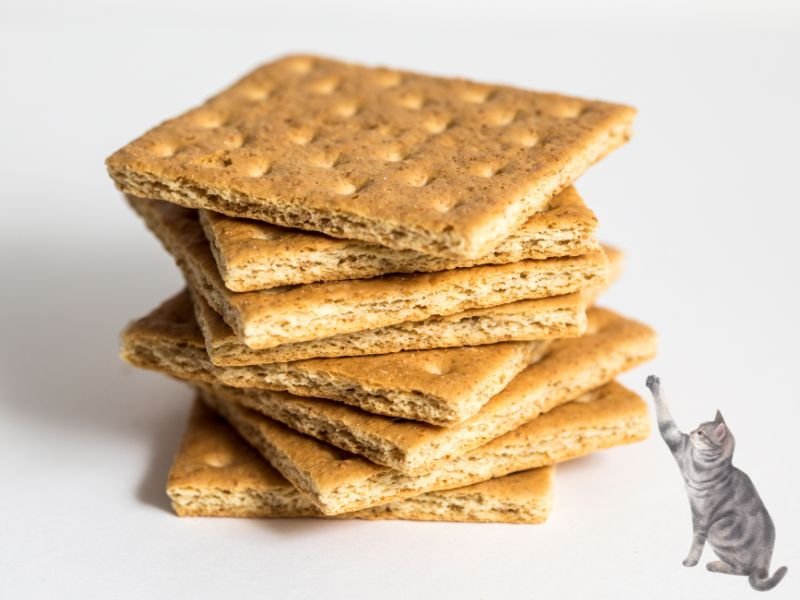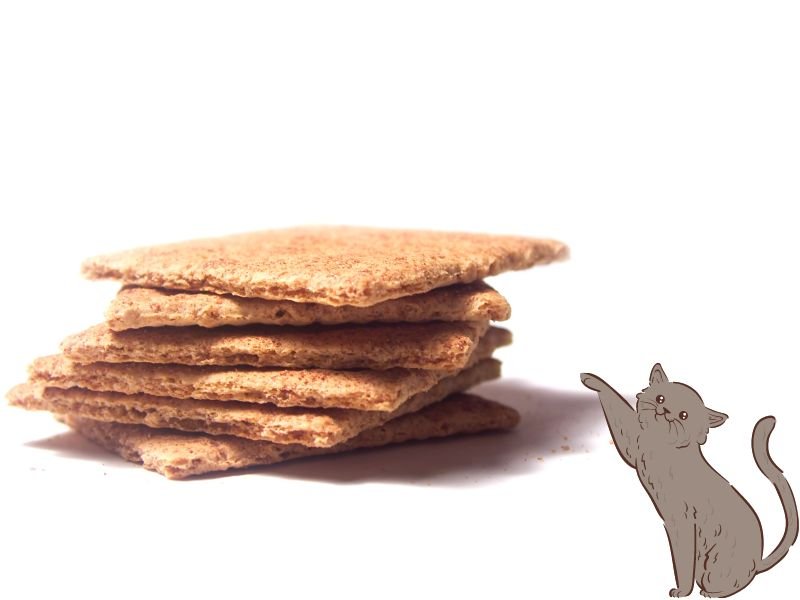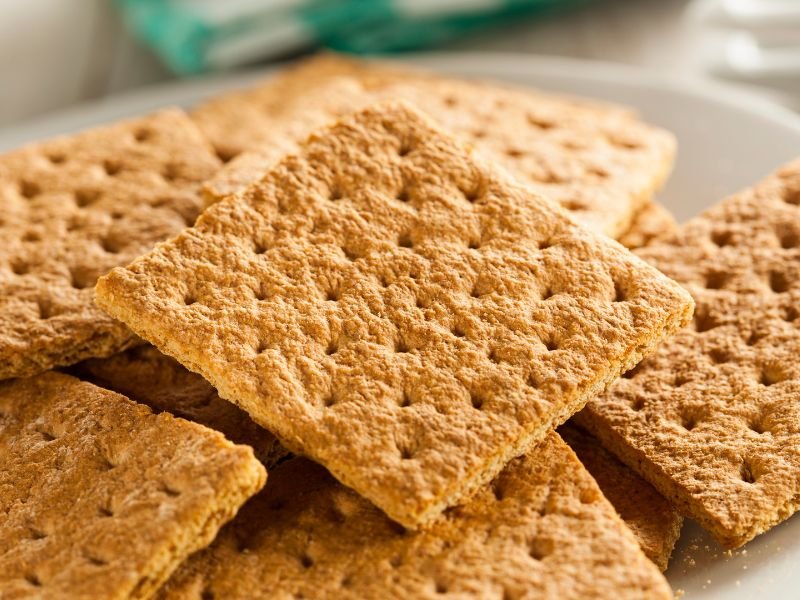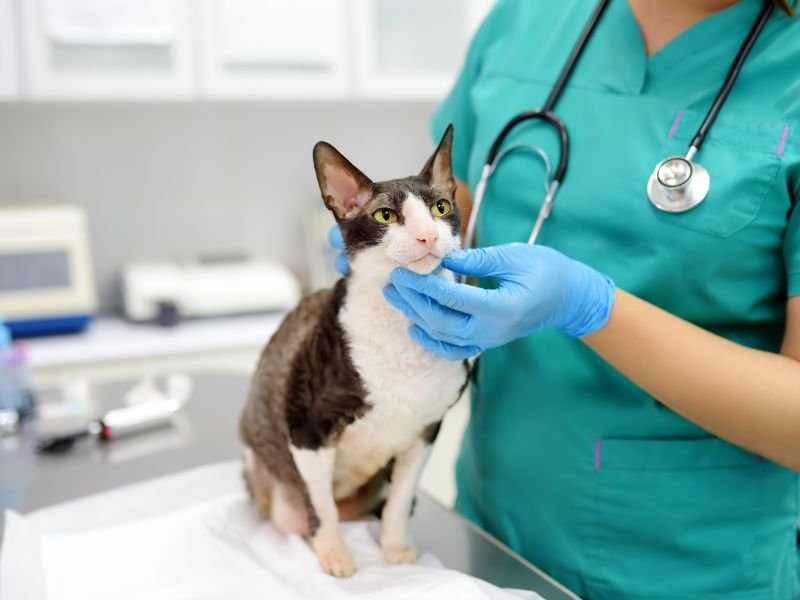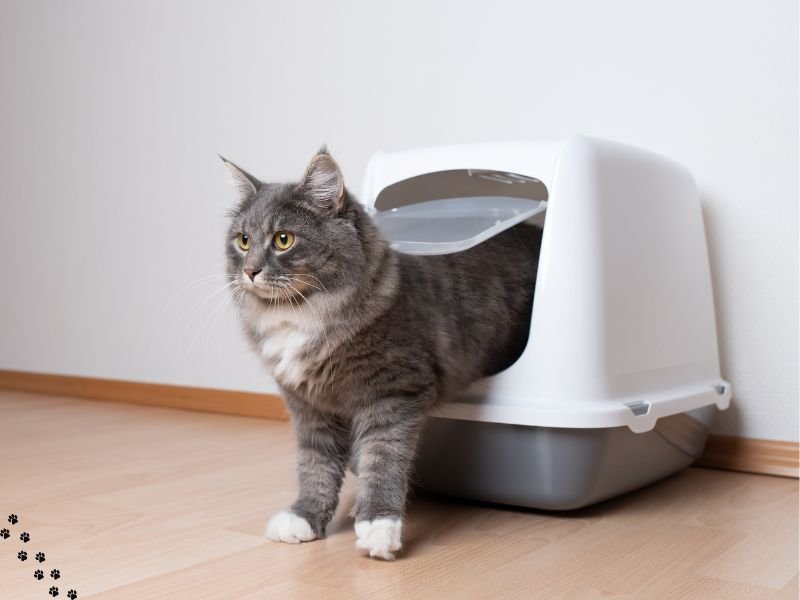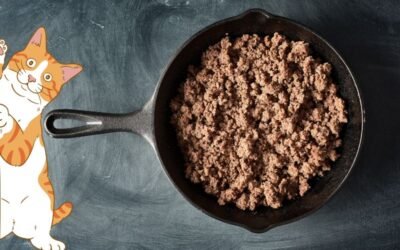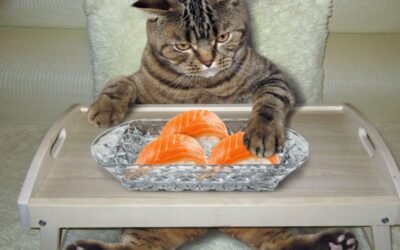Regarding snack time, our feline friends often become as curious and persistent as ever, desperately trying to sneak a little taste of whatever we’re indulging in.
But as cat owners, it is our responsibility to ensure we aren’t unknowingly putting our pets at risk. So, what about graham crackers?
Are they a safe treat for our beloved kitties, or should we be cautious about sharing this sweet delight with our whiskered companions?
In this article, we will delve into the world of graham crackers and uncover whether these crunchy, honey-flavored snacks are a perfectly acceptable treat or if they should be kept far from our curious cats’ reach.
Table of Contents
- Exploring the Feline Diet: Can Cats Eat Graham Crackers?
- Understanding the Nutritional Needs of Cats: Is Graham Cracker a Suitable Treat?
- Potential Risks and Benefits: Weighing the Pros and Cons of Feeding Graham Crackers to Your Cat
- Safe Alternatives: Discovering Healthy Treat Options for Your Feline Friend
- Common Signs of Digestive Issues: Identifying Any Potential Reactions to Graham Crackers in Cats
- Consulting with Your Veterinarian: Seeking Professional Advice on Including Graham Crackers in Your Cat’s Diet
- FAQs About Can Cats Eat Graham Crackers
- Conclusion
Exploring the Feline Diet: Can Cats Eat Graham Crackers?
When it comes to the feline diet, it’s crucial to ensure that cats are consuming food that meets their nutritional needs.
While cats may exhibit curiosity towards human foods, it’s essential to evaluate the appropriateness of certain treats, such as graham crackers, for their diet.
First and foremost, it’s important to acknowledge that cats are obligate carnivores, meaning their bodies are designed to primarily derive nutrients from animal-based sources.
Unlike humans or omnivorous animals, cats have unique dietary requirements that revolve around a high protein, moderate fat, and low carbohydrate intake.
Graham crackers, on the other hand, are mainly composed of refined wheat flour, sugar, and potentially other additives, making them quite different from a typical feline diet.
While cats may show interest in graham crackers or other human foods, it does not necessarily imply that they are suitable or safe for their consumption.
Taking into account the nutritional needs of cats, it becomes evident that graham crackers lack the essential nutrients they require to thrive.
The excessive carbohydrate content and potentially harmful additives may pose concerns for their overall health and well-being.
However, it’s important to seek more in-depth information on the topic to arrive at a well-rounded understanding.
Understanding the Nutritional Needs of Cats: Is Graham Cracker a Suitable Treat?
Graham crackers are a popular snack enjoyed by humans, but are they appropriate for our feline friends?
Cats are obligate carnivores, which means their bodies are designed to thrive on a diet that consists primarily of meat.
Protein is an essential component of their diet, providing them with the necessary amino acids to support growth, development, and overall health.
While cats can digest small amounts of carbohydrates, their bodies are not designed to efficiently process high amounts of grains or carbohydrates.
Graham crackers are typically made from a combination of whole wheat flour, sugar, and other ingredients that may not align with a cat’s nutritional needs.
While they may be seen as a harmless treat, it is important to remember that cats have specific dietary requirements that differ from our own.
Feeding them graham crackers on a regular basis could potentially lead to nutritional imbalances and even health issues.
Potential Risks and Benefits: Weighing the Pros and Cons of Feeding Graham Crackers to Your Cat
In order to make an informed decision about whether or not to offer your cat graham crackers as a treat, it is crucial to assess the potential risks and benefits associated with this snack.
While there are a few possible advantages to consider, there are also some concerns that should be taken into account before introducing graham crackers into your cat’s diet.
Potential Benefits:
- Variety in Texture: Graham crackers have a slightly crunchy texture, which may provide a different sensory experience from your cat’s regular diet. Some cats enjoy the added crunch and find it mentally stimulating.
- Occasional Treat: In moderation, graham crackers can be a unique occasional treat for your cat, creating a bonding experience and offering a sense of indulgence.
Potential Risks:
- High Carbohydrate Content: Graham crackers are primarily made of wheat flour, which is high in carbohydrates. Cats have a low carbohydrate requirement in their diet, and excessive intake can contribute to weight gain and potential health issues such as diabetes.
- Artificial Sweeteners: Some graham crackers may contain artificial sweeteners, such as xylitol, which can be toxic to cats. It is essential to carefully read the ingredients list and ensure the absence of any harmful additives before offering graham crackers to your feline friend.
- Digestive Upset: Cats have a sensitive digestive system, and introducing new ingredients can lead to gastrointestinal issues like diarrhea or vomiting. It is important to closely observe your cat for any signs of digestive upset after consuming graham crackers.
Before introducing graham crackers or any new treat into your cat’s diet, it is always recommended to consult with your veterinarian.
They will be able to provide personalized advice based on your cat’s specific dietary needs and any potential health concerns.
Remember, every cat is different, and what might be safe for one may not be suitable for another.
Safe Alternatives: Discovering Healthy Treat Options for Your Feline Friend
In this section, we will explore some safe and healthy alternatives to Graham crackers that can be used as treats for your beloved feline companion.
While it is important to ensure that our cats receive occasional treats to keep them happy, it is equally vital to choose treats that are nutritionally beneficial and safe for their consumption.
1. Lean Meat
Cats are obligate carnivores, meaning their diet primarily consists of meat. Therefore, offering small amounts of lean meats such as cooked chicken or turkey can be a great alternative to Graham crackers. Just make sure to remove any seasoning or bones that could pose a choking hazard.
2. Freeze-Dried Protein Treats
Freeze-dried treats made from high-quality sources of protein like chicken, fish, or even organ meats can provide a nutritious and irresistible option for your cat. These treats are often low in carbohydrates and packed with essential nutrients.
3. Cat-Specific Treats
Many pet stores offer various cat-specific treats specially formulated to meet the nutritional needs of felines. These treats are typically designed to promote dental health, provide added joint support, or address specific dietary requirements. Always check the ingredient labels to ensure they are free from any potential allergens or harmful additives.
4. Homemade Cat Treats
If you prefer to have complete control over the ingredients, making homemade cat treats can be a fun and rewarding experience. There are numerous recipes available online that use cat-friendly ingredients like tuna, salmon, or even pureed baby food (as long as it doesn’t contain onion or garlic).
Remember, treats should only account for a small portion of your cat’s overall diet. It is essential to maintain a balanced and complete diet consisting of high-quality cat food to ensure they receive all the necessary nutrients they need to thrive.
When introducing any new treatment, it is always recommended to do so gradually and monitor your cat for any adverse reactions.
Common Signs of Digestive Issues: Identifying Any Potential Reactions to Graham Crackers in Cats
In order to determine whether or not including graham crackers in your cat’s diet may cause any digestive issues, it is important to be aware of the common signs of potential reactions that cats may exhibit.
While some cats may be able to tolerate small amounts of graham crackers without any issues, for others, it can lead to gastrointestinal distress or other negative symptoms.
- Vomiting: One of the key signs that your cat may be experiencing digestive issues after consuming graham crackers is vomiting. If you notice your cat vomiting shortly after indulging in this treat, it may be an indication that its system is not able to process the ingredients properly. Persistent or excessive vomiting can be a cause for concern and should be monitored closely.
- Diarrhea: Another telltale sign of digestive problems is diarrhea. If your cat experiences loose or watery stools after eating graham crackers, it may be a sign that its digestive system is having difficulty breaking down the ingredients. Diarrhea can lead to dehydration and electrolyte imbalances, so it’s important to seek veterinary care if it persists or worsens.
- Lethargy and decreased appetite: If your cat seems unusually tired or lacks their usual appetite after consuming graham crackers, it could be a sign of digestive discomfort. Cats may exhibit lethargy, reduced appetite, or even refuse to eat altogether if they are experiencing stomach upset or other digestive issues.
It’s worth mentioning that these signs may not be exclusive to graham crackers alone and can be observed with any other food that your cat may have trouble digesting.
If you notice any of these digestive issues after feeding your cat graham crackers, it is advisable to discontinue offering this treatment and consult with your veterinarian for further guidance.
Remember to always introduce any new food or treat gradually and observe your cat’s reactions closely to ensure their well-being.
Consulting with Your Veterinarian: Seeking Professional Advice on Including Graham Crackers in Your Cat’s Diet
Seeking professional guidance is crucial when it comes to incorporating any new food items into your cat’s diet, including graham crackers.
While some cats may tolerate and even enjoy the occasional nibble of this treat, it is important to consult with your veterinarian before introducing any new food into your feline friend’s regular diet.
Your veterinarian has the expertise to assess your cat’s individual needs and provide tailored recommendations that align with its overall health.
Schedule an Appointment
Before giving graham crackers to your cat, it is advisable to schedule an appointment with your veterinarian. During this consultation, you can discuss your cat’s dietary requirements, any existing health conditions, and potential risks associated with feeding them graham crackers.
Your veterinarian will evaluate your cat’s overall health and advise you on whether it is safe and beneficial to incorporate graham crackers into its diet.
Discuss Portion Control
Your veterinarian will guide you on the appropriate portion size of graham crackers, if suitable for your cat at all. It is essential to remember that graham crackers should always be given in moderation as they are not nutritionally balanced for feline consumption.
Your veterinarian will provide specific recommendations tailored to your cat’s size, age, and overall health. It is crucial to adhere to these guidelines to prevent any adverse effects that overconsumption may have on your cat’s well-being.
Monitor for Digestive Issues
After introducing graham crackers into your cat’s diet, it is essential to monitor them for any signs of digestive issues or adverse reactions. These may include vomiting, diarrhea, or changes in appetite.
Should your cat exhibit any of these symptoms, it is crucial to contact your veterinarian promptly for further advice. Regular check-ups with your veterinarian will help ensure that your cat’s overall health is not compromised by the inclusion of graham crackers, or any other treat, in their diet.
By seeking professional advice from your veterinarian, you can make informed decisions about whether or not to include graham crackers in your cat’s diet.
Remember, each cat is unique, and what works for one may not work for another. Your veterinarian will provide personalized guidance based on your cat’s specific needs, ensuring their well-being remains the top priority.
FAQs About Can Cats Eat Graham Crackers
1. Can cats have graham crackers as a treat?
Cats can technically eat graham crackers in small amounts, but they offer no nutritional value to felines and can result in digestive issues or weight gain due to their high sugar and carbohydrate content.
2. Are graham crackers safe for cats to eat?
Graham crackers are not toxic to cats, but it is not recommended to feed them to your feline companion regularly. They are not part of a cat’s natural diet and can lead to obesity or other health problems if consumed too often.
3. Will graham crackers harm cats?
Eating small amounts of graham crackers occasionally is unlikely to harm your cat. However, excessive consumption can lead to digestive issues, including diarrhea or an upset stomach.
4. Do cats like the taste of graham crackers?
While some cats may be attracted to the texture and smell of graham crackers, they do not have taste receptors for sweet flavors as humans do. Therefore, the taste is not likely to be as enjoyable for them as it is for us.
5. What should I do if my cat accidentally ate graham crackers?
If your cat consumed a small amount of graham crackers by accident, monitor their behavior and look out for any signs of digestive discomfort. If they show any concerning symptoms, such as vomiting or diarrhea, it is advisable to consult a veterinarian.
Conclusion
While cats can technically eat graham crackers, it is not recommended or necessary to include them in their diet.
These crackers offer no nutritional benefits for felines and may cause digestive issues or contribute to weight gain if consumed regularly.
It is best to stick to a balanced and species-appropriate diet for your cat’s health and well-being.

